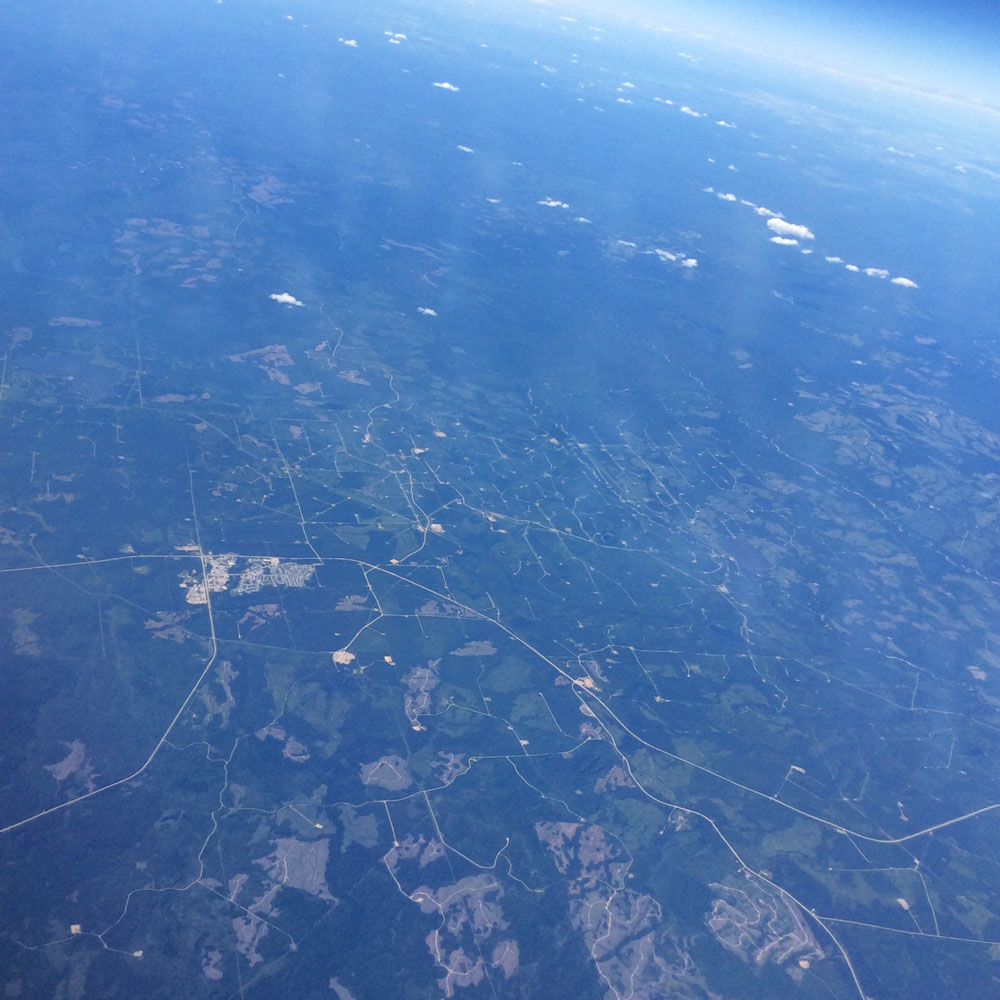0. Human Settlements are Scalar and Co-dependent.

One of the fundamental bases, if not the fundamental basis, of Doxiadis’ Ekistics is that settlements do not exist in isolation. Rather, they are accompanied by other settlements of different shapes and sizes, all of which play different roles. This was not an official “law” within his set of 54 Ekistic Laws of Settlements, however, he considered it a building block of human settlements as a whole. It was explained in-depth in the chapters preceding his description of the laws, serving as a constant reference and baseline. As such, it requires inclusion here as an overarching law.
To summarize succinctly, Doxiadis determined that human settlements contained what he referred to as “units,” ranging from the human body to cities of millions of people. He defined 15 units, grouping them within 4 categories: minor shells or elementary units included humans, rooms and houses, while micro settlements included units smaller than, or the same size as, traditional walkable towns. Meso settlements, on the other hand, ranged between walkable towns and “conurbations” (urban environments of up to 14 million people), while the final category—macro-settlements—expanded from the latter to the largest unit he called the Ecumenopolis, effectively an urban environment of continental proportions with a population of 30,000,000,000.
Specific divisions aside, the essence of Doxiadis’ insights is that human settlements are part of a co-dependent scalar system or network—units that work together to form a more complex whole. This has been elaborated on by several writers since. At the most basic level, it is evident in the great number of cities that have been formed by small villages or towns that have gradually expanded into one another or have been more formally acquired through annexation. Recent developments in transportation technology and aviation have allowed this co-dependence to span larger distances.
Henri Pirenne’s seminal work Medieval Cities: Their Origins and the Revival of Trade is worth mentioning here. Written originally in 1969, the book describes the intricate relationship between different trading settlements across the Mediterranean Sea and their dramatic transformations from dynamic ‘international’ urban centres to rural-based, localized settlements with weak economies after those co-dependent ties were severed.
Many more recent, seminal works also speak to this idea. In A Pattern Language, for example, Christopher Alexander orders his ‘patterns’ according to scale, from largest to smallest—region to room. He states: “Each pattern is connected to certain ‘larger’ patterns which come above it in the language; and to certain ‘smaller’ patterns which come below it in the language. The pattern helps to complete those larger patterns which are ‘above’ it, and is itself completed by those smaller patterns which are below it” (Alexander, 1977, p. xii).
Mark DeKay and G.Z. Brown build from this idea in their excellent work Sun, Wind and Light: Architectural Design Strategies, furthering the initial scalar idea by adding connections to environmental systems, both passive and active. More specifically, how issues related to climate—sun for heating, wind for cooling, and daylight for natural lighting—affect buildings and built form. Its strategies range from building groupings through individual buildings and buildings elements (windows, floors, walls, etc.), tying these to larger patterns.
Similarly, in his rigorous research of settlements across the Appalachians—East 40 Degrees: An Interpretive Atlas—Jack Williams describes how towns “…with their infrastructure exist as a network across the landscape; the way they are connected implies a larger order” (Williams, 2006, p. 224).
At the neighbourhood scale, Anne Vernez Moudon’s in-depth study of the built fabric around Alamo Square in San Francisco explicitly addresses cities as scalar organisms. In Built for Change, she explicitly describes the physical structure of the city as a series of interrelated scales ranging from topography, through street networks, blocks, buildings, and rooms—each of which is intricately explained in detail.
More recently, Jonathan Rose’s succinct history of how cities developed over time, in The Well-Tempered City, cites connectivity as one of the nine fundamental characteristics necessary for the emergence of the first cities. Speaking to the early Ubaid period of settlement development, from 5500 to 4000 BCE, he states “The connectivity of differentiated communities, and the commerce and culture that flowed through them, enriched the network effect that not only increased the diversity of the whole system, but allowed each community to increase its own diversity” (Rose, 2016, p. 51). This laid the foundation for larger settlements to develop and is, accordingly, a critical trait of their success.
This is just a small sampling of the diverse writing that has supported Doxiadis’ scalar approach to human settlements and their co-dependence. This can easily expand to include the works of Serge Salat, Nikos Salingaros and Renee Chow, to name a few more. Although they do not necessarily name the same specific “units” as Doxiadis, the overarching idea around the interconnection of settlements across scales and space remains front-and-centre. And in an era of global reach, it remains more valid than ever before.
Further Reading (full citations found in reference list):
- Constantino Doxiadis – Ekistics: An Introduction to the Science of Human Settlements
- Henri Pirenne – Medieval Cities: Their Origins and the Revival of Trade
- Christopher Alexander – A Pattern Language
- Jack Williams – East 40 Degrees: An Interpretive Atlas
- Mark DeKay and G.Z. Brown – Sun, Wind and Light: Architectural Design Strategies
- Anne Vernez Moudon – Built for Change: Neighbourhood Architecture in San Francisco
- Jonathan F. P. Rose – The Well-Tempered City
- Renee Chow – Suburban Space: The Fabric of Dwelling
- Nikos A. Salingaros – Principles of Urban Structure
- Jane Jacobs – The Nature of Economies
- Spiro Kostof – The City Shaped

